Japan Doll Festival is one of the more unique cultural traditions that many people may not be aware of, but that does not make it any less fascinating or entertaining. The festival takes place on March 3rd.
In this article, we will be exploring Hina Matsuri, also known as Japan’s Doll Festival, exploring everything that you need to know about the festival, when it takes place, where and how the festivities are carried out.
About Hina Matsuri
Hina Matsuri is a Japanese holiday that is also called the Doll Festival, but the festival actually celebrates the happiness, prosperity, and growth of young girls in Japan. The festival takes place on March 3rd every year in Japan.
This holiday is also simply referred to as “girls’ day” reflecting the intentions of the celebrations. Although this holiday is celebrated all over the country, exactly how it is celebrated will depend on which region of Japan you find yourself in.
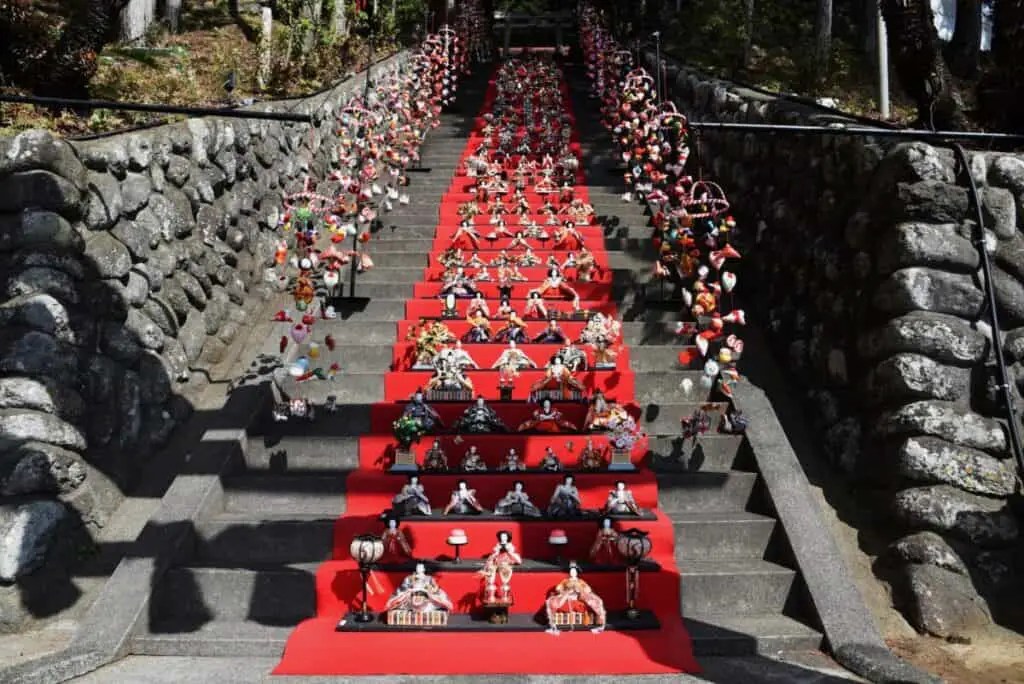
However, the vast majority of celebrations will include most of the same basic festivities such as eating colorful rice crackers (also known as Hina-arare), decorating with peach flowers, and receiving a set of dolls.
How did the festival originate?
There is no concrete origin story for Hina Matsuri, but there are several theories. The most likely origin story to be true is that it grew out of the Shanxi Festival in China and which was introduced into Japanese culture when the country converted to the Chinese calendar.
Along with this festival, several other Chinese festivals were also bought into Japan such as the Dragon Boat Festival and the Qixi Festival. Festivals are typically held on days with odd numbers (i.e. here the 3rd) as it is considered to bring good fortune.
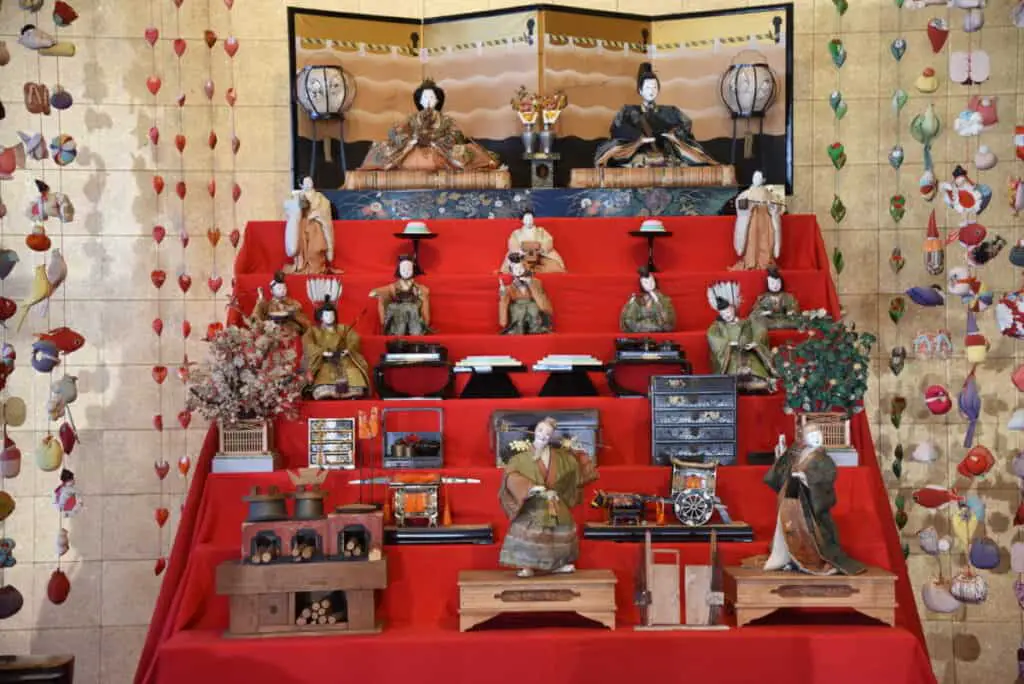
The Shanxi Festival saw people floating dolls down a river in a bid to ward away bad luck and evil. The idea was that the doll would encapsulate all of a person’s misfortunes and sail away with them. This practice was referred to as “drifting doll”.
These dolls became to be referred to as “Hina” dolls and became common as children’s toys and were commonly given as gifts among those in high society.
The current date of the festival (March 3rd) is according to the Gregorian calendar and not the lunar calendar. It is believed that this change came about in the Edo period.
What do the dolls symbolize?
Although the believed origin of the Hina doll was a vehicle to free oneself of bad omens and misfortunes, today they play a different role, that of decoration.
The traditional and original dolls were constructed out of straw and paper and were relatively simple, after all, they were temporary and being disposed of.
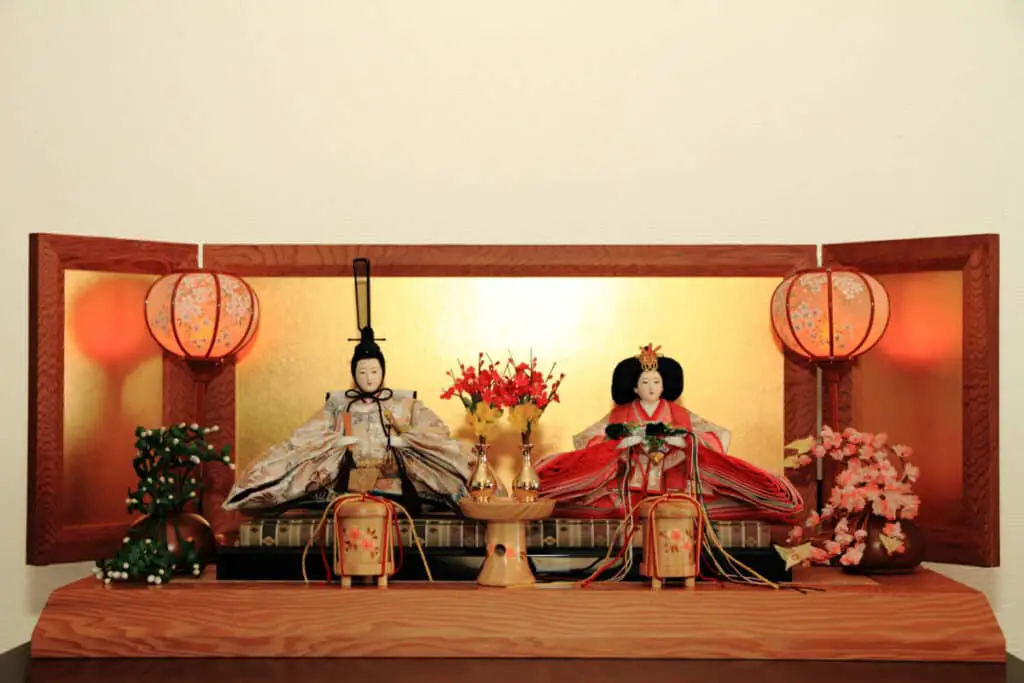
However, as the dolls transitioned into their new role as decoration, toy, and gift they gradually became better made and more intricate.
Modern-day hina dolls can be incredibly elaborately decorated. In particular, during the Edo period when this change from simple to intricate began people would choose to dress their dolls like the royals and cover them in robes and other elaborate clothing.
What is the role of the peach blossom?
As with most decorations in Eastern Festivals, there is a significant meaning behind each decoration. In regard to the peach blossom here it symbolizes longevity, wards off evil, and rids the onlooker of misfortune.
Hence, it is a very auspicious flower and its meaning matches well to that of the festival.
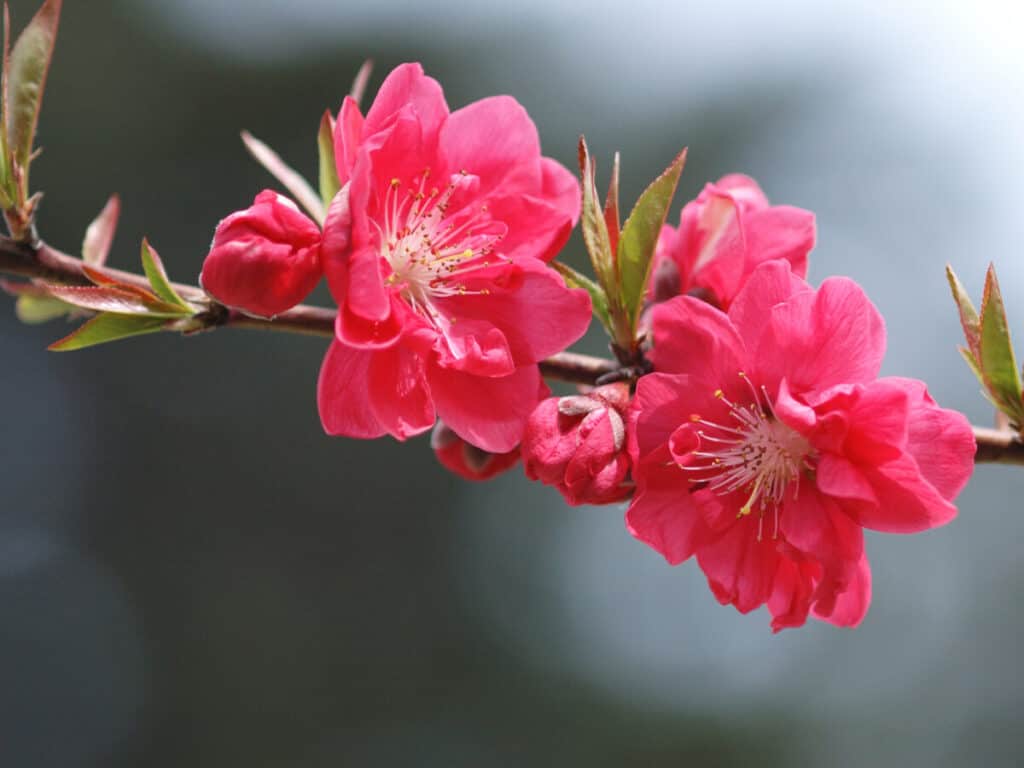
However, the peach blossom is also a delicate flower that is bright pink in color, lending itself very well to the connection of girls’ day in Japan.
What are the different types of dolls?
The dolls come in both male and female versions and typically each household will have one of each at the very least.
However, the dolls can be one of two types: costumed or grooved. The costumed dolls, as you can probably guess from the name, are dolls that are covered in small garments. On the other hand, the grooved dolls can be a little bit more tricky to decorate.
For this type of grooved doll, the doll’s main body is made from a mixture of powder and glue into which grooves are cut and a design is imprinted.
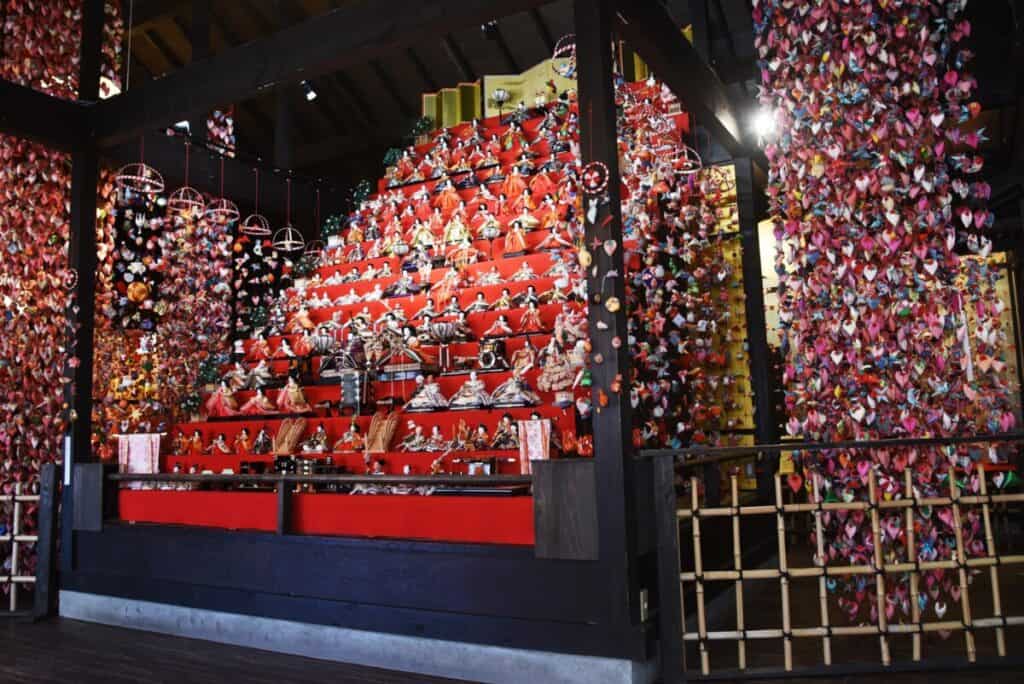
This design can either be in the form of dye or the adhesion of small pieces of decorative fabric that are placed into the grooves.
Once each doll is decorated, however, you wish you can then begin to elaborately arrange them into a proper position. There are various levels for each doll to be displayed.
For example, the most complex way is to arrange the dolls on a seven-tiered stand. You can also find stands with only two or three levels.
In the instance of the seven-tiered stand, you would dress your dolls up according to the rank that they hold on the stand. For example, from the top down it would look like this:
- Imperial dolls
- Court ladies
- Male musicians
- Preist or guardians
- Helpers or protectors
- Items that are used in a palace
- Items that are used when away from the palace
The top tier is reserved for iconic decoration. The general idea for the stands is that it is based on a traditional wedding at court.
However, the dolls are very expensive (with some even in the range from $700 for a two-tier stand set all the way up to $2600 or more for a five-tiered set). So, for this reason, it is very common for families to pass down the dolls as heirlooms.
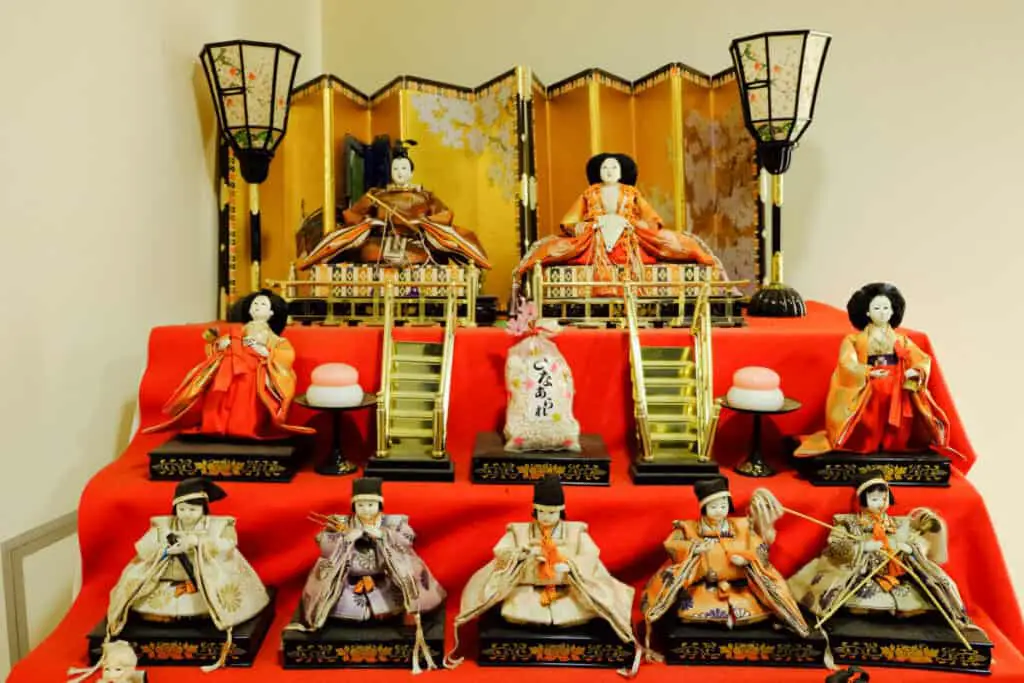
Note that the very top tier is also filled with only two dolls and also they are called the “imperial dolls” they are not representative of the current imperial family.
The next tier below this houses three ladies of the court, followed by five male musicians, two guardians, three protectors, and then an array of various items such as mirrors, chests, sewing kits, utensils, and even ox-drawn carts.
It is customary to set up the dolls stands at least one week in advance of the festival.
How is the festival celebrated today?
The exact festivities will vary from region to region. So, if you are heading to a particular part of Japan for this festival make sure to look up that region’s particular celebrations.
However, here we will give you a rundown of some of the best and most interesting celebrations around the country.
The hina dolls display in Katsuura City
During the Doll festival, approximately 30,000 dolls will be displayed in Katsuura City, making it quite a sight to behold. The city is also adorned with red decorations to match the other auspicious decorations that mark this holiday.
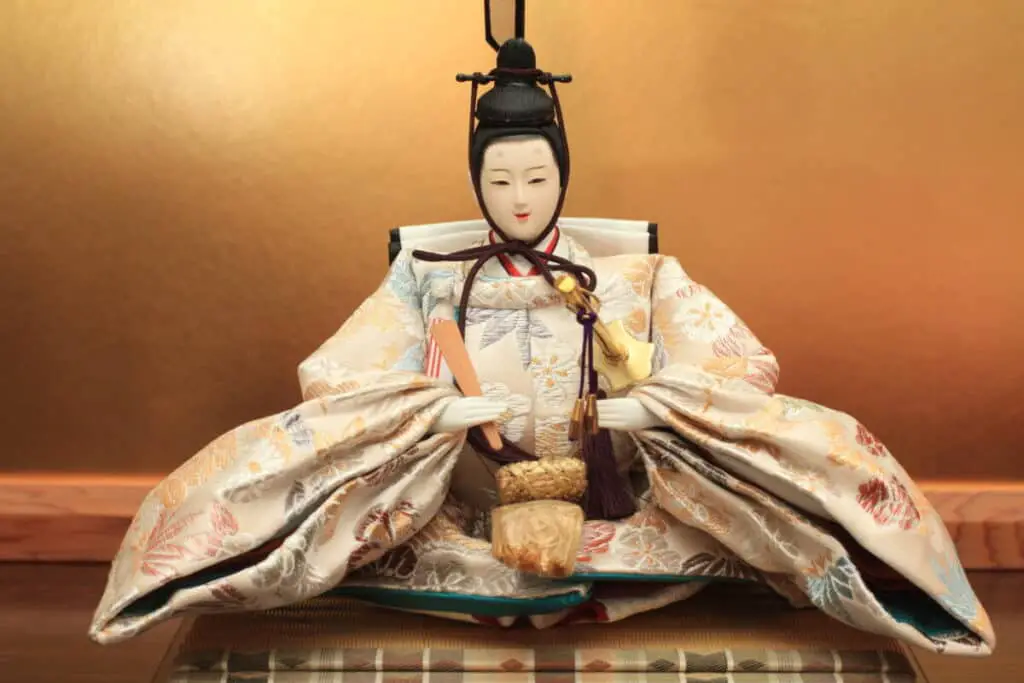
The stone steps that lead up to the Tomisaki shrine are covered in a red cloth and lined with multiple dolls and decorations. Here you can see around 1800 dolls.
The cultural center nearby will also showcase around 8000 dolls and this includes some of the largest hina dolls in Japan.
If you are looking to see an amazing display of hina dolls then Katsuura City is definitely the place to visit during the Hina Matsuri.
Katsuura City Location Via Google Maps
The city of dolls
Known as the “city of dolls”, Iwatsuki is the number one destination in all of Japan for doll production.
Every year during the festival the city has numerous activities related to the hina dolls, such as sightseeing, making your own hina dolls, and even eating hina doll-themed foods.
The sightseeing activity will take you around the city to some of the finest craftsmen of hina dolls in order to allow you to explore their workshops and see how hina dolls are made for yourself.
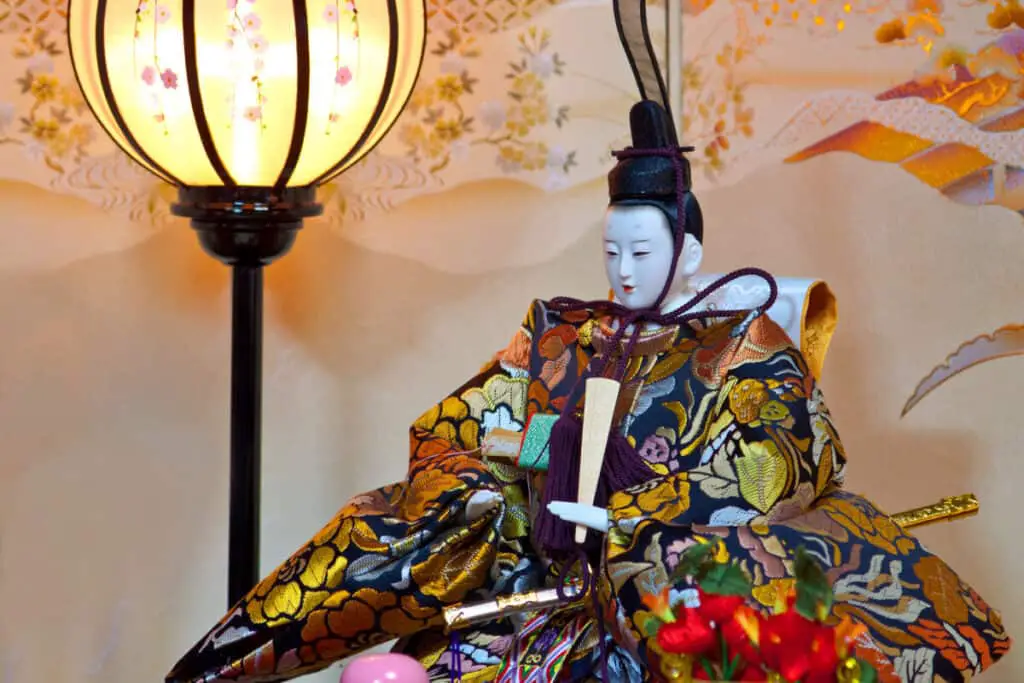
A sea of decorations
If you are planning on visiting Iza Inatori in the Shizuoka prefecture for the doll festival then you will certainly not be disappointed. Here it is customary to hang an incredible amount of red decorations on either side of the doll displays.
So, for this reason, there are four different venues over the city that display the Hina dolls surrounded on either side by a sea of beautiful hanging decorations.
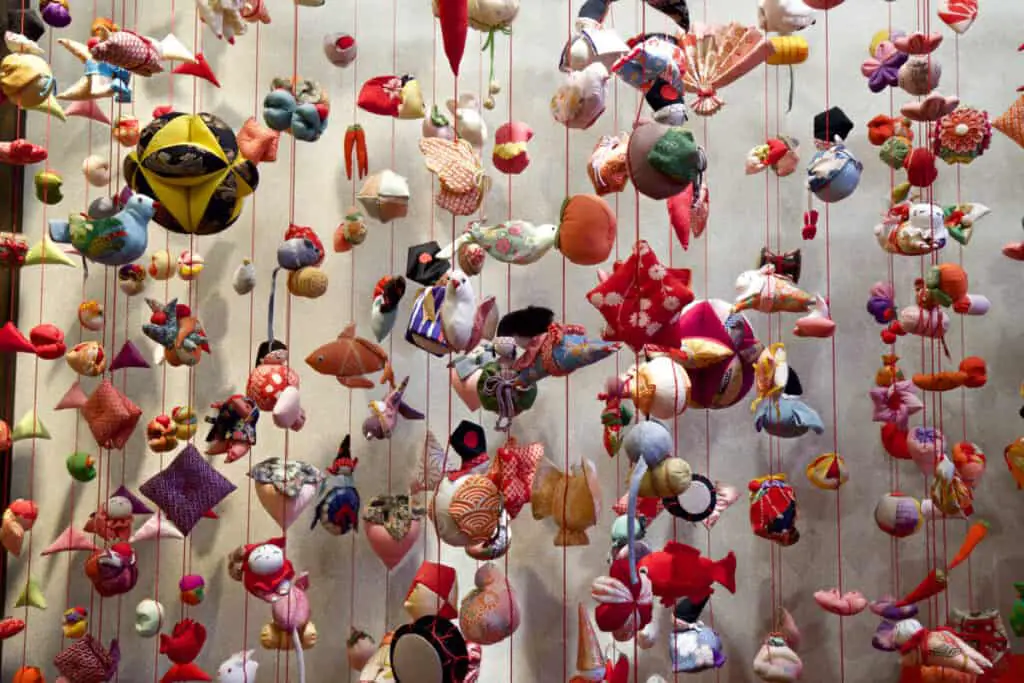
Here it is tradition to pass the decorations down through the family, meaning that you will be able to see some beautiful antique family heirlooms on display.
Many shops in the town sell more modern decorations and souvenirs so that you can pick up a little something to remember your trip and the festival.










